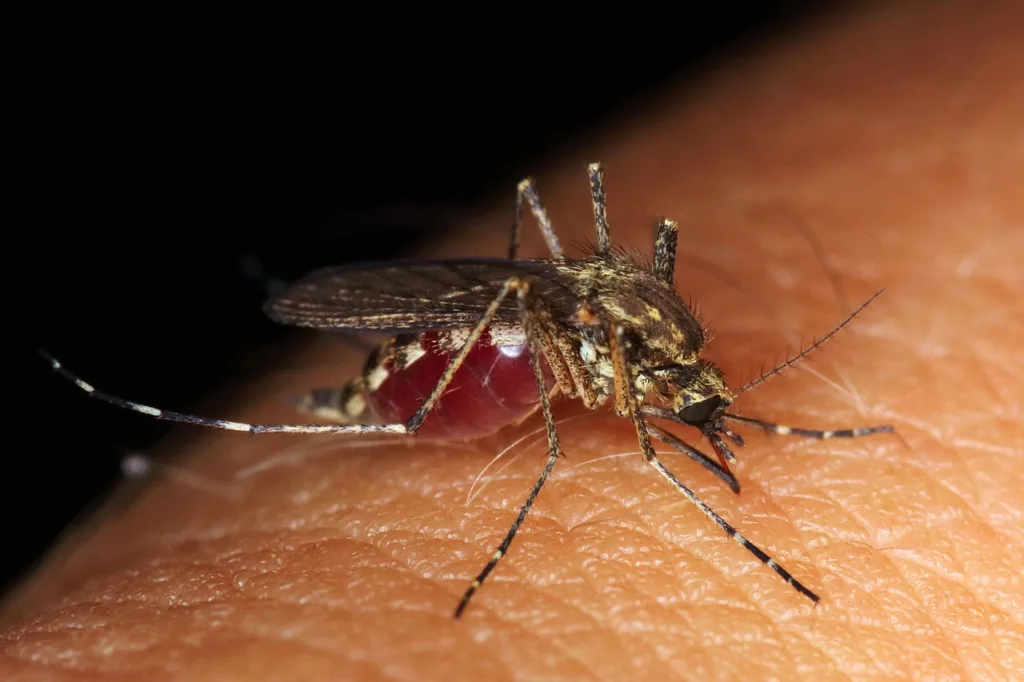Malarone, a widely used antimalarial medication, combines two active ingredients: atovaquone and proguanil.
Understanding the chemical composition of Malarone is crucial for appreciating how it works against the Plasmodium parasites responsible for malaria.
In this article, we will delve into the specifics of:
- Malarone’s composition
- Individual properties of atovaquone and proguanil
- Their synergistic action between the two
Atovaquone: A Potent Antimalarial Agent
Atovaquone, a hydroxynaphthoquinone, stands as a potent antimalarial agent. Its mechanism of action involves inhibiting the mitochondrial electron transport chain in the malaria parasite.
This disruption prevents the parasites from generating energy, leading to their demise. Atovaquone exhibits a high degree of specificity, targeting the malaria parasite without affecting human mitochondrial function.
Proguanil: Enhancing Antimalarial Efficacy
Proguanil, on the other hand, serves to enhance the antimalarial efficacy of Malarone. This compound undergoes metabolic conversion in the body to its active form, cycloguanil. Cycloguanil inhibits the dihydrofolate reductase enzyme in the Plasmodium parasites, disrupting their ability to synthesize essential nucleic acids. By targeting this enzyme, proguanil contributes to the overall antimalarial effect of Malarone.
The Synergistic Action of Atovaquone and Proguanil
The combination of atovaquone and proguanil in Malarone creates a synergistic effect:
- While atovaquone targets the parasite’s energy production, proguanil acts on nucleic acid synthesis.
- This dual mechanism significantly reduces the likelihood of resistance development, as the parasites must overcome two distinct inhibitory actions.
- The synergy enhances the overall effectiveness of Malarone in treating and preventing malaria infections.
Pharmacokinetics: Absorption, Distribution, Metabolism, and Excretion
1) Absorption in the Body
Malarone is administered orally and undergoes absorption in the gastrointestinal tract. Both atovaquone and proguanil are well-absorbed, with peak plasma concentrations reached within a few hours after ingestion.
The bioavailability of atovaquone is influenced by the presence of food, emphasizing the importance of taking Malarone with a meal or a snack.
2) Distribution within the Body
Once absorbed, atovaquone and proguanil are distributed throughout the body. Atovaquone exhibits high lipophilicity, allowing it to penetrate various tissues, including the liver and lungs, where the malaria parasites often reside.
Proguanil is metabolized in the liver to its active form, cycloguanil, contributing to the distribution of the active antimalarial components.
3) Metabolism and Conversion
Proguanil undergoes hepatic metabolism to form cycloguanil, the active metabolite responsible for the antimalarial effects.
This metabolic conversion is crucial for proguanil’s efficacy, as cycloguanil is the compound that inhibits the dihydrofolate reductase enzyme in the parasites.
4) Excretion from the Body
The elimination of Malarone components occurs primarily through renal excretion. Atovaquone and its metabolites are excreted via the urine, while proguanil and cycloguanil are also eliminated through both renal and biliary pathways. The elimination half-life of Malarone components varies, necessitating the recommended daily dosing to maintain therapeutic levels in the body.
What Is The Recommended Dosage and Administration?
Malarone is commonly prescribed in standard dosage forms, with each tablet containing a fixed combination of atovaquone and proguanil.
The recommended dosage varies based on factors such as patient age, weight, and the specific purpose of use (treatment or prophylaxis). This can also affect the cost when you get a prescription for Malarone.
- Adherence to prescribed dosages is crucial for ensuring optimal antimalarial protection and minimizing the risk of resistance development.
- Malarone is typically administered with food or a milky drink to enhance absorption, especially for atovaquone.
- It is advisable to take the medication at the same time each day for consistency.
For travelers, initiation of Malarone prophylaxis should begin a few days before entering a malaria-endemic area and continue throughout the stay and a designated period upon return.
Adverse Effects and Precautions
While generally well-tolerated, Malarone may cause mild adverse effects. Common side effects include gastrointestinal symptoms such as nausea, abdominal pain, and diarrhea.
These effects are usually transient and do not require discontinuation of the medication.
Precautions and Contraindications
Certain precautions should be considered when prescribing Malarone. Individuals with known hypersensitivity to atovaquone, proguanil, or any component of the formulation should avoid its use. Additionally, caution is advised for patients with severe renal impairment, as the drug is excreted through the renal pathway.
Malarone may interact with other medications, potentially affecting their efficacy or safety. Notable interactions include certain anticonvulsants, rifampicin, and metoclopramide. Healthcare providers should be informed of all medications and supplements taken to assess potential interactions before prescribing Malarone.
What is Malarone’s Role in Malaria Management?
Malarone’s chemical composition, combining atovaquone and proguanil, underpins its effectiveness in malaria treatment and prophylaxis.
- The synergistic action of these compounds targets different aspects of the Plasmodium parasites’ life cycle, reducing the risk of resistance development.
- Understanding the pharmacokinetics, dosage considerations, and potential adverse effects is crucial for healthcare providers and individuals using Malarone for malaria prevention and treatment.
As part of the broader arsenal against malaria, Malarone continues to play a vital role in global efforts to combat this infectious disease.

